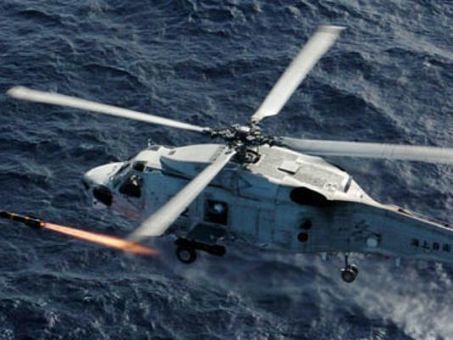TOKYO — Japan's growing need to improve its anti-submarine warfare (ASW) capabilities to counter quieter Chinese submarines in littoral waters could set off a three-way race between an upgraded indigenous platform against longer-term solutions, analysts said.
Last August, the Defense Ministry decided to start replacing its aging fleet of 46 SH-60J and 39 SH-60K Seahawk helicopters, providing an initial ¥7 billion (US $57.6 million) as part of a ¥48.1 billion development project. The procurement will lead to the deployment of about 80 new helicopters after 2022, MoD spokesman Tsuyoshi Hirata said.
The procurement mentions indigenous development, so it would seem to favor an easy upgrade of the SH-60K produced by Mitsubishi Heavy Industries (MHI) with more advanced electronics, unless the Japan Maritime Self-Defense Force (JMSDF) is looking for a longer-term, more advanced solution, said Matthew Caris, an associate at Avascent Group, a Washington-based defense and aerospace consulting group.
"It seems like an odd time and a small amount of money to develop something truly new; perhaps it's the development of a new MHI H-60 variant with entirely indigenous electronics, which would make a lot more sense," he said.
A US-based source agreed the SH-60K provided a ready-made upgrade and was a logical move.
"The airframe itself is capable and already integrated into JMSDF operations, so a focus on improvements to mission system sensor and processing capability would likely be sufficient to most economically meet future helicopter ASW requirements," the source said.
But pressures are building that suggest the MoD may expand its search, analysts said.



 Your new post is loading...
Your new post is loading...







